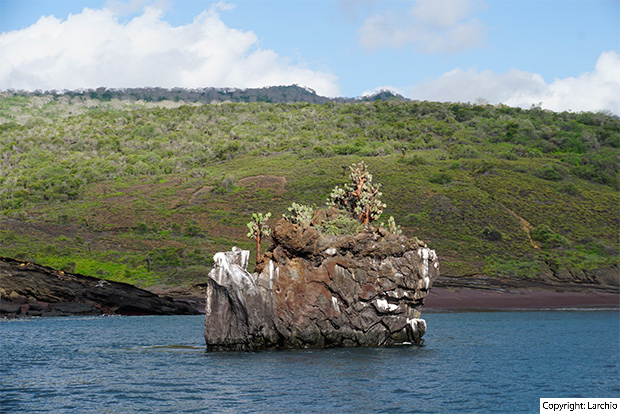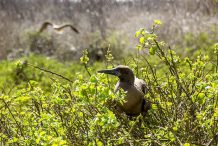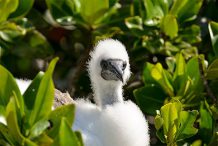Best Island to visit in Galapagos 2025
We are an excellent Galapagos local agency. Travel with trust!. Best Island to visit in Galapagos 2025.
A trip to this enchanted Galapagos islands lives up to hopes for a protected area removed from the typical troubles of society. The skies are are usually bright and sunny, and the marine winds produce that appropriate air environment that can quickly calms down your body. The water is an ever-attractive turquoise blue, matched by extended sandy beach locations of amazingly white, red, brown and green. You will find crystal coves and sheltered mangrove lagoons, as well as towering cliffs and caves.
We have the best compact ships and yachts offering you unmatched connection to the best sites in the archipelago as well as the highest possible level of safety and comfort. This company is committed to the perfect experience, that involves hikes, swimming, surfing and sea kayaking. You will learn about the special behavior and biological characteristics that species has evolved to adapt to the unique circumstances on each area. Because livestock have developed without humans and other large predators, therefore you’ll be able to connect very closely with amazing and unusual animals that have absolutely no fear of humans. Explore among cinder cones, white and black sand beaches, rocky cliffs and abundant underwater environments.
When is a good time to see the Galapagos?
The Galapagos Islands, based on the Pacific Ocean, about a thousand kilometers (600 miles) west of Ecuador, have a very distinct climate, warm and semi-arid, with a very hot and relatively stormy period coming from January to May, along with a dry and cool period, as well as cloudy and misty, from July to November.
The surroundings of the Galapagos are dry, with the exception of the highlands of the bigger islands, which get much more considerable rain fall. As was already observed by Charles Darwin, who as we know analyzed the details of the species located in the islands, their weather conditions are less hot than an individual could assume from a location found close to the Equator, because of the Humboldt Current, which often reaches the area after circulating in the water west of South America. In any case, here the climate is not the same from one year to another, as there are diverse ocean flows that meet or take turns in the region (there’s also a warm current coming from Central America, which usually flows at a little length and is more powerful in the years of El Niño), meaning that the weather is challenging to predict.
On the shorelines, the rainfall amounts to less than 600 millimeters (20 inches) per year, so it’s in no way copious. This is the regular precipitation in Puerto Baquerizo; we are able to see the reality that within the dry season, only a few millimeters per month accumulate, thanks to mainly to drizzle and dew formation.
It needs to be said that rainfall is irregular, and may be abundant in the years of El Niño. Through the most serious El Niño years, such as 1982-83 and 1997-98, the climate of these Galapagos turns into completely tropical, with higher temperatures and also plentiful rainfall. In the years of La Niña, instead, the rains become more scarce, and there’s a decline in each air and ocean temperature.
When to visit
Typically, the Galapagos may be visited throughout every season. However, the perfect time to visit Galapagos, if you also want to swim and also take sunbathes, runs from February to May, because it’s the hottest and sunniest, even though there could be some rains or thunderstorms in the morning.
The cold period, from July to November, can be encouraged to explore nature, because it hardly ever rains on the flatlands and the temperature is nice, even if you need to take into mind mists, haze and cloudy air. From September to November the water can be a little rough, and this can upset people that suffer from movement illness, during boat journeys from one island to the next.

What clothes you should pack
From December to May (warm season): light clothing, a light sweatshirt for the night, light raincoat or umbrella for rainfall showers; sun hat (of course, we’re at the Equator). For hiking in the hills and the Vulcan Wolf, a bit more comfortable sweatshirt and raincoat, trekking shoes.
From June to November (cool period): light clothes, sweatshirt and lightweight coat for the evening hours.
For the ocean, gear for knee boarding, water shoes or rubber soled footwear.
The Galapagos is a year-round vacation destination, and nature-loving visitors can expect to be stunned by the nature in any month. However, there are two most important “periods,” each of which has its draws and disadvantages.
High season, when tourists typically force occupancy levels to the max, is known mid-June through early September and December until mid-January. From June until November, the Humboldt Current produces cooler, nutrient-rich water and (slightly) colder temperatures. Common peaks are normally about 80 degrees Fahrenheit. Winds and seas are generally a little harder. Skies in many cases are overcast, but rainfall is rare. The change in water attracts fish and marine birds, making this an amazing moment to swim. Given the colder water temperatures utilizing a diving suit is a smart idea for snorkelers hoping to stay in the ocean longer. This is also the mating period for the blue-footed boobies.
December until May, the air and water temperature ranges are generally warmer, in the high 80’s, and seas are more calm. Light rain falls for a while each day, but the humidity is balanced with potent sun rays. Sun-fans may be tested in February, when tropical heating scorches the lava. Land vegetation blows up, with flowers everywhere. Many species of birds mate during this period, and sea turtle nesting also occurs.
El Nino, a climate phenomenon, can upend weather-related expectations, delivering a tropical feel to the surroundings at unexpected periods.
The Way to Get to the Galapagos Islands</h3
The Jose Joaquin de Olmedo International Airport at Guayaquil (GYE) receives flights out of U.S. cities of Miami and New York, European cities of Amsterdam and Madrid, and major cities of Central and South America. Mariscal Sucre International Airport of Quito (UIO) receives flights in the U.S. through Atlanta, Dallas, Houston and New York; from Europe via Madrid and Amsterdam; also from many major cities in Central and Southern America. We advise you to arrive in Ecuador at least two times before your Galapagos Cruise starts and catch your international flight home at least 2 days after your stay in the Galapagos. It’s possible to take benefit of both of these times by visiting Quito, Guayaquil, or even their surroundings. As soon as you have your flight to mainland Ecuador, getting into the Galapagos Islands is simple. Located almost 1,000 km (600 miles) from Ecuador’s coast, the only way to travel is by airplane. Whether Quito or Guayaquil, there are several flights daily that require passengers into the archipelago. TAME, AVIANCA and LAN will be the airlines that run these routes. If you are flying from Quito, you’ll most likely have a brief stop in Guayaquil on your way into the islands. Reserve your Galapagos tour before you buy flight tickets to ensure correct dates. Check with your Galapagos tour or cruise company for information on booking your trip to the Galapagos including optimum coming days to the Islands based on cruise/program plans.
Most of tourists traveling in Galapagos are amazed to be greeted by desert-like vegetation–many are anticipating a continuation of the lush greenery they observed on mainland Ecuador. In fact, the majority of the archipelago’s land area is covered by the brown and gray vegetation often located in deserts. The Galapagos Islands are located in the Pacific Dry Belt, also in typical ages only the greatest altitudes of the bigger islands get enough rain to support tropical plant life.
In Geological terms, the islands are young, and much of the island’s plant life reflects this; many species seem to be in the midst of the evolutionary process, which makes classifying them a challenging endeavor. To date, the islands are believed to be home to between 552 and 614 native species of plants and roughly 825 introduced species, nearly all introduced by humans. Over 100 of those introduced species have become established in the wild, with a lot of these exceptionally invasive and of major concern. Three introduced plant species have been eradicated. Mainland Ecuador, on the other hand, has approximately 20,000 species. The discrepancy between species number on the Islands and the southern highlights the reality that the Galapagos Islands are separated from the continent by a hostile saltwater barrier decreasing the prospect of birth and, once a plant has come, institution is difficult because of the harsh surroundings. It’s worthy of notice that more than 30 percent of indigenous plant species located in Galapagos are endemic (not found anywhere else on earth).
Coastal plants are found in the narrow zone close to the shore and are distinctive because of their tolerance to salty conditions. Mangrove trees are among the most frequent plants found in this zone, and they serve a significant role as the breeding sites for many birds, such as pelicans and frigate birds. They also give much needed shade regions for iguanas and sea lions, in addition to refuges for sea turtles.
The arid area is easily the most extensive zone in Galapagos and is comprised of plant species that are highly adapted to drought-like states, such as succulent cacti and leafless shrubs that flower and grow leaves only in the brief rainy season.
Located above the dry zones are the very green and lush, humid zones. In portions of the zone, Scalesia trees form a very dense forest in the humid zone, using their branches adorned with mosses, liverworts, and epiphytes–non-parasitic plants that use larger trees only for support. The humid zone is only located on the larger, larger islands. Nearly all islands in the archipelago do not rise in elevation over the arctic zone.
GALAPAGOS CRUISES 2024
NEMO 2
| DEPARTURES | ITINERARY | AVAILABLE CABINS | SPACES | |
|---|---|---|---|---|
| There aren't available dates for the selected dates |
















